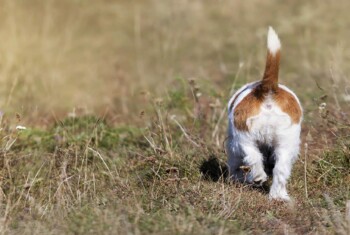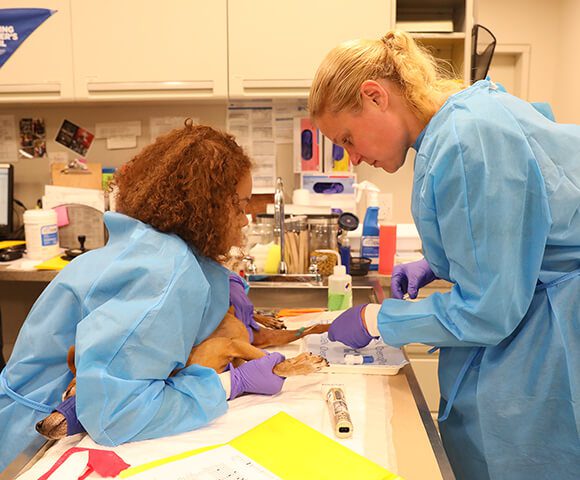Dental extractions: How and why.
Oral health is a very important factor in a pet’s quality of life and can affect overall health. You are making a wonderful commitment to your pet’s oral care. Please be aware that each patient is different; however, we will do our best to determine a treatment plan during your initial visit.
Why would my pet need extractions?
Extractions are necessary in cases of severe periodontal disease, unsalvageable tooth fracture and tooth resorption. Although we prefer to save teeth whenever possible, it is much better to have no tooth than a painful tooth. Our pets do very well with missing teeth, and often, they do better when the painful tooth is gone.
Why can’t my veterinarian perform the extractions?
 It is important to know that there is no such thing as a “just pulling it” procedure when it comes to a dog or cat’s tooth. Our pet’s teeth are designed to stay in the mouth under extreme forces (think of a lioness taking down a zebra), so it can be very difficult to extract an animal’s tooth. Human dentists who have been asked to help in animal cases have said, “It’s like these teeth are in cement!”
It is important to know that there is no such thing as a “just pulling it” procedure when it comes to a dog or cat’s tooth. Our pet’s teeth are designed to stay in the mouth under extreme forces (think of a lioness taking down a zebra), so it can be very difficult to extract an animal’s tooth. Human dentists who have been asked to help in animal cases have said, “It’s like these teeth are in cement!”
Often, extraction involves major oral surgery and specialized equipment. Complications such as bleeding, jaw fractures and creation of a hole from the mouth to the nose are real possibilities.
What do extractions involve?
Procedures can vary depending on the tooth and the disease process. Prior to any extraction, a nerve block that lasts between 6-8 hours is provided to help minimize oral pain and discomfort.
With surgical extractions, we normally make incisions in the adjacent gum tissue to create a flap and provide access to the tooth. We often need to remove the bone that overlies each root, section the tooth into individual roots and extract each root separately. The alveolus (socket) is flushed to remove any debris, and the extraction site is closed with absorbable sutures.
In some cases, we can extract a tooth without the need for incisions and bone removal. In these cases, we carefully elevate each root individually and close the extraction site with absorbable sutures.
The risks associated with extractions depend on the tooth involved. Unlike people, dogs and cats do not experience “dry sockets,” and their recovery is quick. Aside from temporary oral discomfort and minor bleeding, most procedures go without complications, and these patients feel great.
How Will my pet do without their teeth?
 Most pet owners are concerned that their pet will not be able to eat after a tooth (or teeth) has been extracted. Chances are your pet was not using those painful teeth anyway! In fact, despite a potentially uncomfortable surgery, they will continue to eat, even the night of the procedure.
Most pet owners are concerned that their pet will not be able to eat after a tooth (or teeth) has been extracted. Chances are your pet was not using those painful teeth anyway! In fact, despite a potentially uncomfortable surgery, they will continue to eat, even the night of the procedure.


